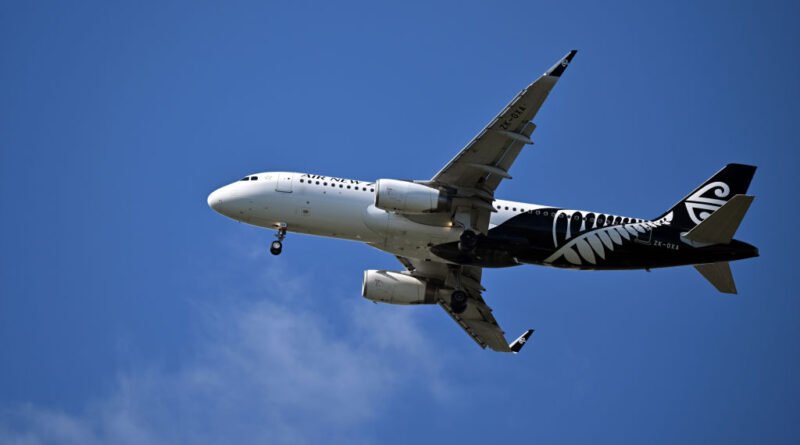Two injured in turbulence on Air New Zealand flight
An aviation professor suggests that recurring severe turbulence events will likely accelerate research into identifying invisible turbulence in the future.
In the third instance of severe flight turbulence in slightly over a month, both a passenger and a crew member sustained injuries.
Passenger reports indicate that Air New Zealand flight NZ607 encountered turbulence shortly after take-off on Sunday afternoon.
A paramedic seated near the passenger provided aid.
The turbulence resulted in the flight attendant being thrown to the floor of the aircraft.
This incident marks the third recent case of passengers and crew sustaining injuries due to strong turbulence during flights.
Following previous instances of severe turbulence on a Singapore Airlines flight causing numerous injuries and a 73-year-old British man passing away from a suspected heart attack, this latest event occurred.
Shortly after, twelve individuals sustained injuries due to a significant turbulence encounter on a Qatar Airways flight last month.
Aviation expert Keith Tonkin previously mentioned to The Epoch Times that the two incidents were likely coincidental.
“It doesn’t take much of a bump,” he explained.
‘Mechanical Turbulence’ a Factor in NZ Flight Incident
About the Air New Zealand flight incident, CQUniversity Aviation Professor Doug Drury informed The Epoch Times that several factors likely contributed to the occurrence.
Moreover, the flight was conducting a refreshment service at the time, meaning the flight attendant was moving about without fastening a seatbelt.
En route to Queenstown from Wellington, the aircraft encountered what is referred to as “mechanical turbulence,” which involves fast-moving air colliding with mountains, causing upward movement.
“This is tied to weather patterns, occurring when transitioning from warm to cold seasons, disturbing the air where the two fronts meet,” Mr. Drury stated.
“This form of turbulence is known as thermal turbulence due to its connection to temperature shifts.
“Unfortunately, as climate change becomes more prevalent, we can expect more incidents like this.”
Mr. Drury emphasized that securing seatbelts was still the most effective way to prevent injuries while airborne.
“Technological advancements are being made to enable flight crews and air traffic control to identify turbulence, which will only accelerate research and development,” he noted.
“However, currently known as ‘clear air turbulence,’ it remains unseen … for now.”
Inquiries were made to Air New Zealand for comment.
According to the Australian Civil Aviation Authority (CASA), there are six turbulence categories, ranging from mild bumps like “light chop” to “extreme turbulence” capable of violently tossing an aircraft.






